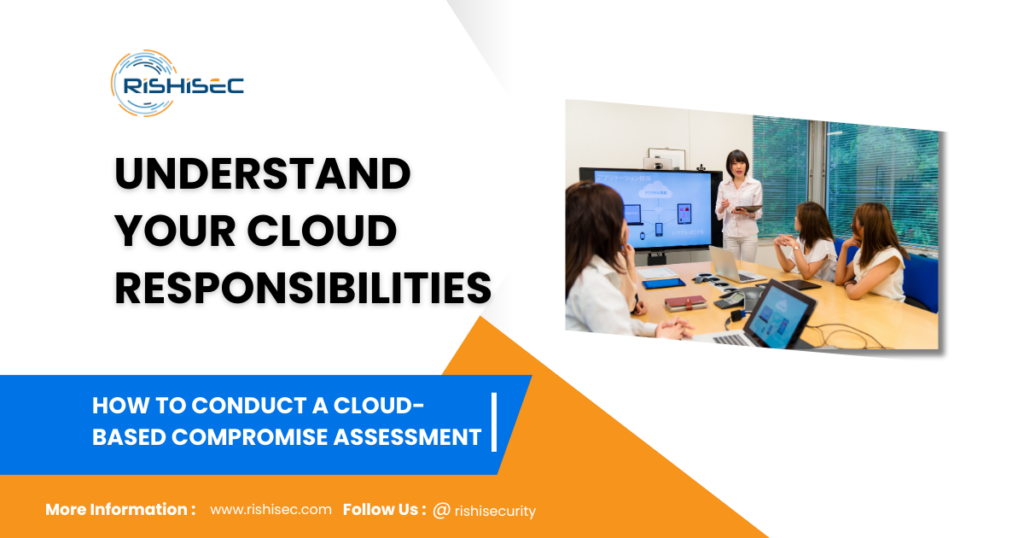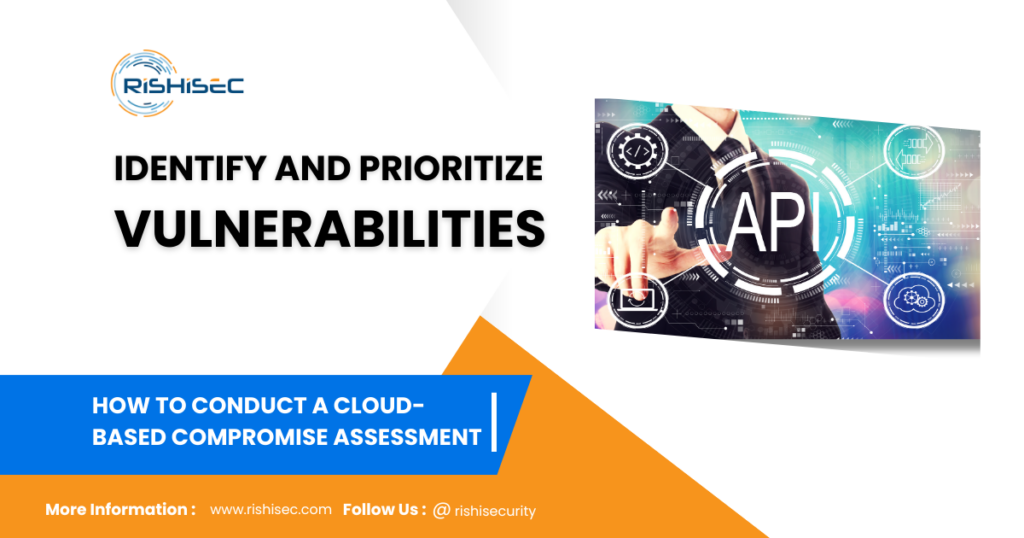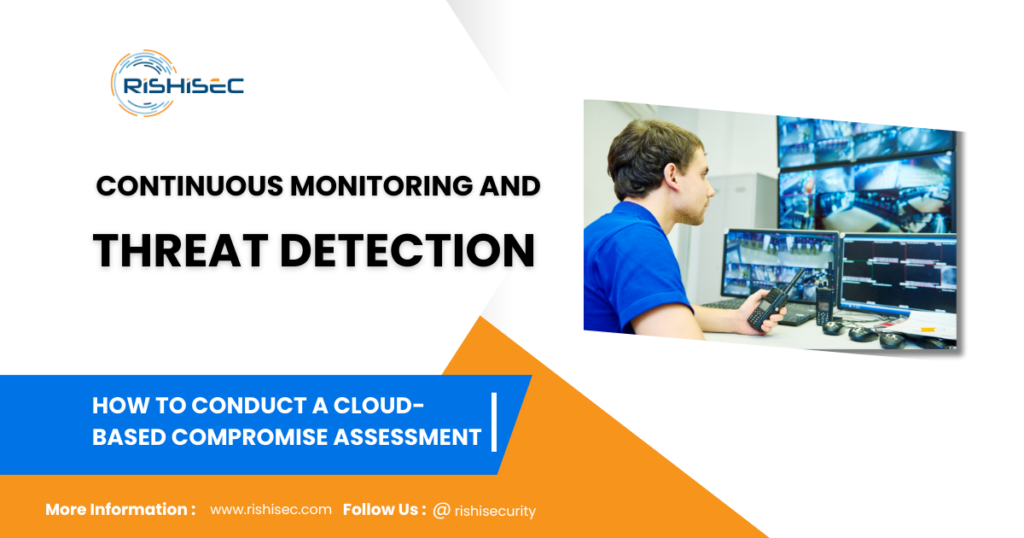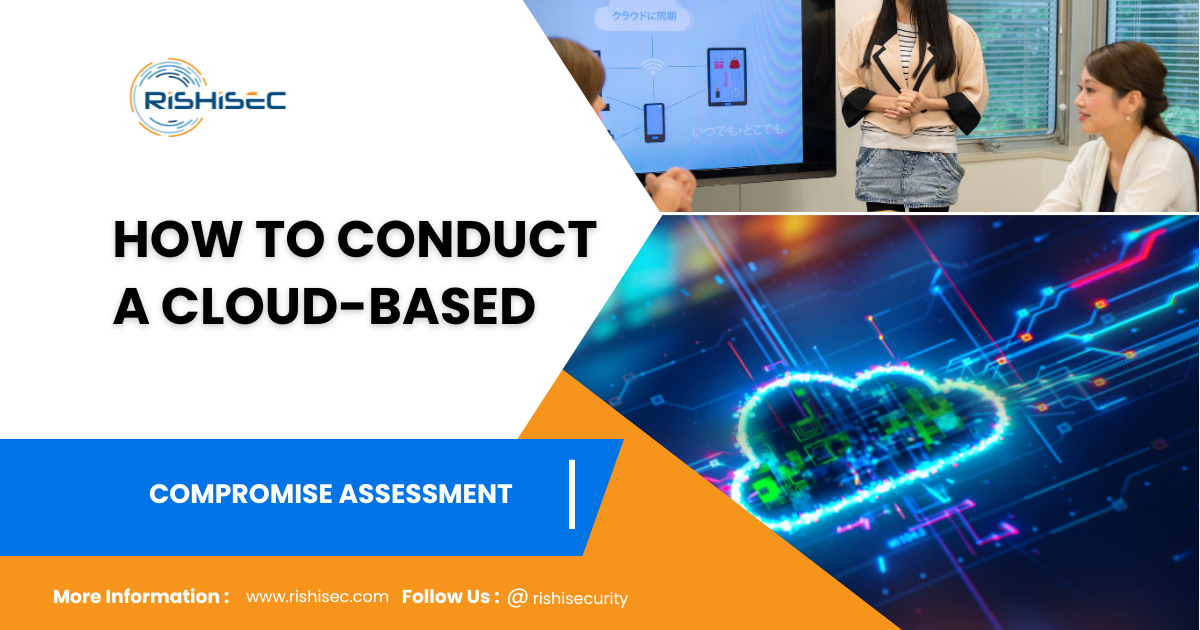Contents
- 1 Conduct a Cloud-Based Compromise Assessment
- 1.1 1. Understand Your Cloud Responsibilities
- 1.2 2. Leverage Cloud-Native Logs and Monitoring Tools
- 1.3 3. Identify and Prioritize Vulnerabilities
- 1.4 4. Conduct Forensic Investigations
- 1.5 5. Implement Remediation Strategies to Conduct a Cloud-Based Compromise Assessment
- 1.6 6. Continuous Monitoring and Threat Detection in Cloud-Based Compromise Assessment
- 2 Conclusion
- 3 CTA
Conduct a Cloud-Based Compromise Assessment
Cloud environments bring flexibility but also pose unique security challenges. A cloud-based compromise assessment ensures your cloud systems are fortified against evolving threats. In this guide, we’ll explore the steps needed to conduct a robust assessment that protects your cloud assets.
1. Understand Your Cloud Responsibilities

Understand Your Cloud Responsibilities
Security in the cloud is shared between you and the cloud provider. While providers manage the physical infrastructure, you, in turn, handle data security, identity management, and application protection. Therefore, be sure to map out your responsibilities versus those of the cloud provider.
Moreover, understanding where your responsibilities lie helps prevent common oversights. For example, misconfigurations and poor access control are often exploited in cloud breaches. Thus, ensure you’re diligent with managing credentials, setting security policies, and employing encryption standards.
2. Leverage Cloud-Native Logs and Monitoring Tools
Cloud environments generate massive amounts of data, and logs are vital to uncovering vulnerabilities. Cloud-native tools like AWS CloudTrail, Google Cloud Logging, and Azure Monitor provide critical insight into activities across your environment. Analyze patterns of access, anomalies, and failed login attempts to flag suspicious behavior early.
These tools help you understand both normal operations and potential compromise indicators. To enhance your security strategy, it’s essential to regularly conduct a Cloud-Based Compromise Assessment. By continuously analyzing this data, you can detect abnormal traffic flows, unauthorized access, and policy violations quickly and take corrective actions to mitigate risks.
3. Identify and Prioritize Vulnerabilities

Cloud-specific vulnerabilities include misconfigured storage buckets, API security gaps, and weak access policies. Use vulnerability scanning tools, such as Prisma Cloud or Dome9, to uncover these issues. Perform a Cloud-Focused Security Evaluation to ensure that your environment remains resilient against emerging threats. Prioritize remediation of high-risk vulnerabilities, especially those tied to identity and access management (IAM) or external-facing services.
Exploits often target weak APIs or misconfigured permissions, so review permissions regularly and remove unnecessary access rights. Implement least-privileged access models and enforce multi-factor authentication (MFA) to reduce attack vectors.
4. Conduct Forensic Investigations
When conducting forensic analysis in the cloud, utilize tools like AWS CloudTrail or Azure Sentinel to investigate access logs, identify compromised accounts, and trace the attacker’s actions. Execute a Cloud-Compromise Inspection to ensure your investigation captures all relevant details and identifies potential vulnerabilities. Ensure your team is well-versed in interpreting cloud activity logs and that forensic investigations align with your cloud provider’s guidelines for evidence collection.
These tools provide visibility into network traffic, user activities, and configuration changes, allowing you to pinpoint how attackers gained access and what assets were affected. This step is critical to forming a well-informed response and recovery strategy.
5. Implement Remediation Strategies to Conduct a Cloud-Based Compromise Assessment
Identify threats quickly and remediate them without delay. Cloud services provide features like automatic reversion to known secure states, account disabling, and network isolation. Develop an incident response plan that tackles common cloud risks and ensures fast action during a breach.
Proactively preparing for incidents limits exposure and minimizes downtime. Use tools like AWS Security Hub or Azure Security Center to automate incident response workflows, ensuring your team takes the right actions immediately upon detection.
6. Continuous Monitoring and Threat Detection in Cloud-Based Compromise Assessment

Continuous Monitoring and Threat Detection
Cloud environments change quickly, so your monitoring needs to keep up. If you use continuous monitoring tools like AWS Config or Azure Security Center, you can spot changes or suspicious activities right away. But without automated alerts and responses, problems might go unnoticed and could turn into serious breaches.
Continuous monitoring not only helps you catch issues early but also makes sure your security measures stay current and meet compliance rules. And because automated systems can find gaps in real time, you can fix problems fast before they become bigger threats.
Conclusion
Compromise assessments in the cloud require a tailored approach that considers the unique risks and dynamic nature of cloud environments. By leveraging native cloud security tools, addressing vulnerabilities, and implementing continuous monitoring, organizations can enhance their security posture and reduce the risk of a breach.
CTA
Ready to take your cloud security to the next level? Try SentryCA’s compromise assessment tools designed for AWS, Azure, and Google Cloud. Our platform provides automated monitoring, real-time threat detection, and actionable insights to keep your cloud infrastructure secure. Start your free trial today and protect your cloud environment from evolving threats!
You may also like to learn about the Top Tools for Effective Compromise Assessments


